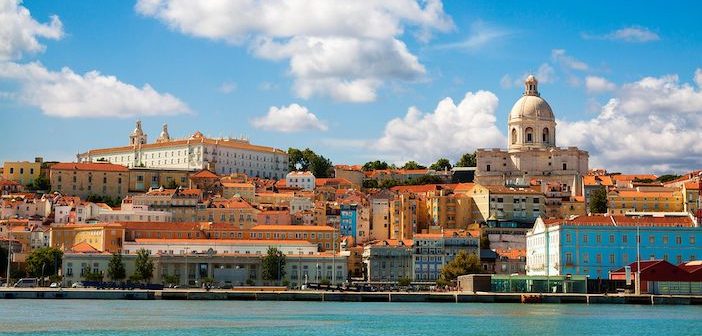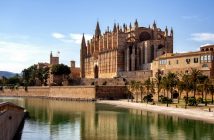An unassuming but quietly confident and proud city, Lisbon is small enough to offer an intimate experience, but large enough to get lost in. Perched upon the River Tagus which opens up into the Atlantic, its air is fresh and bracing, its light pure and edifying. It has a history to match anywhere in Europe (Invasion! Earthquake! Revolution! Fire!) and it might sound disingenuous but a lesser touted attraction is its proximity to the charming beachside town of Cascais. At less than a 30-minute drive or an easy train journey away, this combination easily enables travellers to mix the rare combination of city stay with sea break.
The Intercontinental Lisbon is a shiny, smart and spacious corporate hotel which possesses all the veneer and buzz one would expect from a recent renovation. Ideally located above the Eduardo VII park, just a stone’s throw away from the leafy and upmarket Avenida da Liberdade (St Laurent, Gucci, Burberry, anyone!?), its stunning views stretch far and wide over the hilly city and extend all the way down to the river.
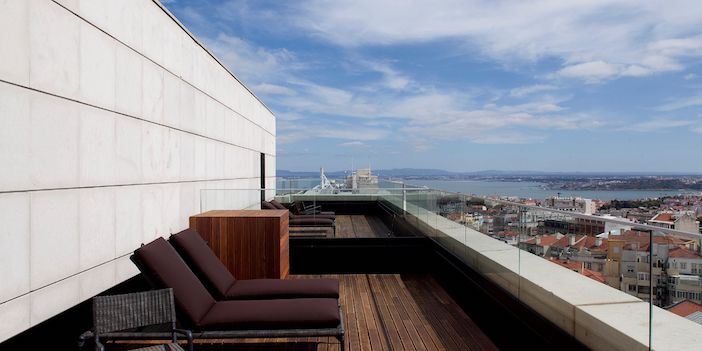
Lisbon feels like a family haven, a safe space in which to wander, to not worry where you might end up. Every other street feels residential and the infinite array of ceramic tiles which pop up on properties everywhere is endlessly fascinating and an iconic part of the city’s identity. Many tiles display colourful, abstract patterns but some offer up stories or family histories. Some displays are a couple of feet wide, others cover whole buildings. The tiles are almost all in pristine condition, no matter what their age and started to appear in more affluent areas after the 1775 earthquake.
A more recent but equally colourful addition to Lisbon is its street art which livens up many an expanse of lifeless concrete. All are completed with official permission and are made by both local and international artists, alike. Shepard Fairey is probably the best known of the latter with two murals, one of which he collaborated on with well known local artist Vhils who uses a mixture of explosives, chemicals and power tools to achieve uncannily effective results.
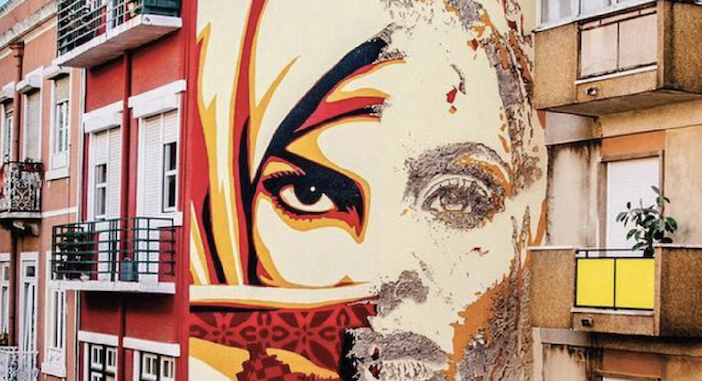
The face of a woman stares blankly, maybe defiantly, from the side of a block of flats. The left side is imbued with Fairey’s traditional black, red, cream colours, the right with the Vhil’s traditional exploded concrete. The piece could be a comment on the future of humanity, half woman, half robot. It could be a comment on the ravages of war. It could just be a mildly diverting piece of art with no message whatsoever. If casual exploring isn’t your thing, Tuk Tuk Tejo will take you on a street art tour in one of their light and breezy tuk tuks; it’s a fun and thrilling few hours.
Make sure to ask your tuk tuk driver to drop you off at Pastéis de Belém, situated in the touristy but historic shipyard area of Lisbon. Neither quite a sweet, nor a desert, a pastéis de nata is Portugal’s favourite snack. And Pastéis de Belém is considered to make the best in the country. The recipe is a secret. The tarts are cooked on premises. A delightful aroma wafts through the large space as you enter. Apparently 20,000 of these egg tarts are sold a day. The custard is warm and indeed, sweet, more viscous than solid. The pastry which holds the tart is flaky and crispy. Close to puff pastry but not as savoury. And some people sprinkle cinnamon over the pastéis makes it taste a little more of Christmas but no less delicious.
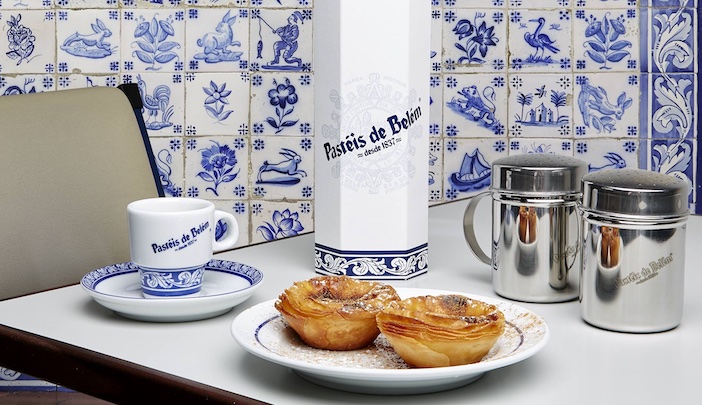
Eating is, of course, one of the city’s absolute pleasures and each restaurant we visited was nothing short of exceptional. Lota D’ávila, near the office towers of Saldanha, offers fresh fish in abundance. The seafood platter for two mixed the more traditional (prawns, crab paste, crab claws) with the downright unexpected (barnacles – which look like Devil’s hooves, squirt enthusiastically when you open them, are very chewy and taste of the sea). In a different neighbourhood (Chiado) it’ll be hard to find as it’s a restaurant hidden behind a couple of restaurants (literally behind a secret door) but Mini Bar at Bairro do Avillez is well worth the effort.
Owned by 2 star Michelin chef, José Avillez, just sit back and let the master assert his creativity with his taster menu. Not only did we have exploding olives, hummus eggs, beetroot and raspberry sorbet shaped like lipstick, served in lipstick receptacles but, the biggest (and best) surprise, candy floss served on foie gras. If the day’s exploration has tired you out, the Intercontinental’s restaurant Akla is a superb place to dine without too much effort.
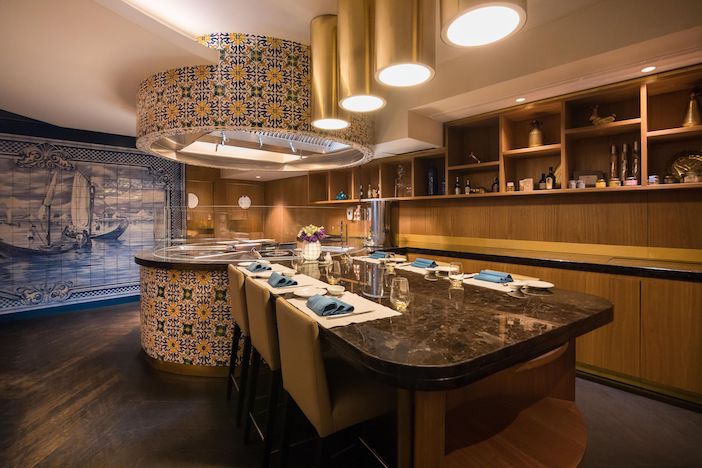
The chef’s table tasting menu is less playful than that at Mini Bar but with seven courses (and wine to match if you so choose), it’s never anything short of sensational and while you partake of the seafood ceviche or the chicken sausage croquette, you can listen to the charismatic and genial chef, Eddy Melo, explain the dishes whilst regaling stories from his colourful life.
The Intercontinental Cascais-Estoril is no less slick or smart than its Lisbon counterpart but is probably best described as being more ‘boutique’. With only 59 rooms, it still possesses the customer service and attention to detail that its Lisbon counterpart has but with every room, its dining and bar area facing the sea, it has more of a glamorous holiday vibe to it. The smallest rooms are a generous 40 square metres and are crisply decorated in elegant, calming sea blues and ocean greys.
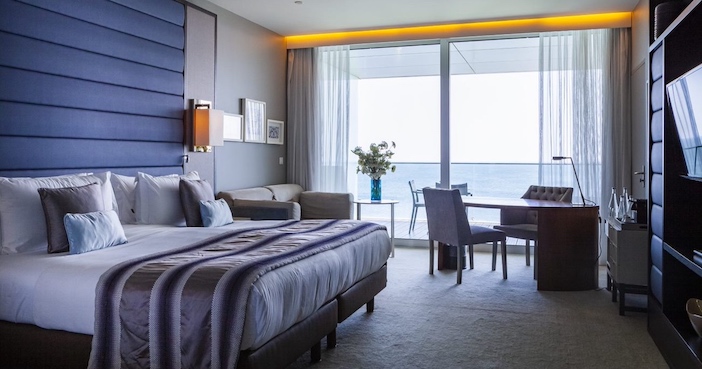
After a couple of busy days rushing around Lisbon, the hotel is perfect for kicking back and relaxing, hopefully under a glowing sun. Breakfast offers an array of fresh food, both hot and cold, full English to Sumo detox juice. Lunch and dinner provide the same high end quality offering everything from the exotic salmon tartar, avocado and tobiko yuzuru eggs to the more curious local comfort food of fried eggs and montelhano ham with fries, mashed up in front of your eyes as if it were baby food. The swimming pool is the hotel’s jewel in its crown; crisp, clean and surrounded by luscious grass and an abundance of foliage and greenery. Like any great pool, it’s easy to stay at its side and lose a few days in a state of calming bliss.
Cascais-Estoril’s old town centre is a lively 20 minute seaside stroll away from the hotel. All you do is follow the coast, so it’s impossible to get lost. For a relatively small place, Cascais is steeped in both political and cultural history and Shortcuts Tourism will show you the sights with flair and enthusiasm. Not only was Cascais a holiday home to many European kings and queens over the decades (especially during World War 2) but Ian Fleming also spent his formative naval intelligence years here.
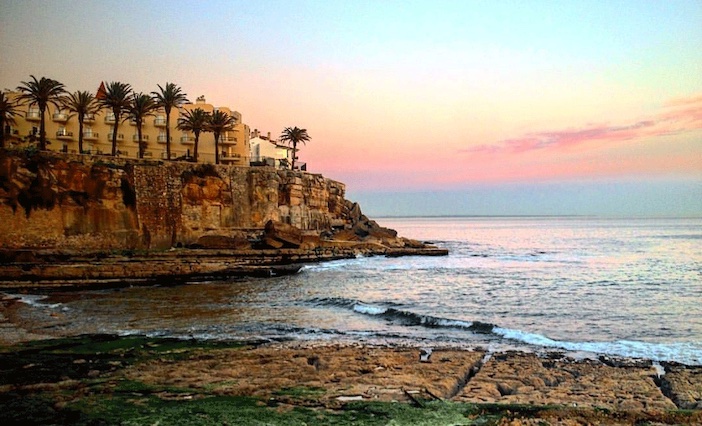
Estoril coastline (Photo courtesy of Shortcuts Tourism)
It was while staying at the local hotel/casino that he was inspired, apparently, by a Yugoslavian spy nicknamed ‘Tricycle’ (so called because he was always seen with two women), to create James Bond. Mega-designer Philip Starke also lives here and is now considered a local while the recently deceased artist, Paula Rego, grew up in Cascais and has a whole museum dedicated to her. Other alternative activities include hiring a sailing boat from the marina, cooking your own lunch at the Cascais Food Lab or taking a day trip to the stunning Pena Palace in the nearby town of Sintra. Or, of course, you could just sunbathe on the beach – you are on holiday, after all!
For more information about Intercontinental Lisbon, including details of room rates and amenities, please visit www.ihg.com. For more information about Intercontinental Cascais, please visit www.estorilintercontinental.com.

